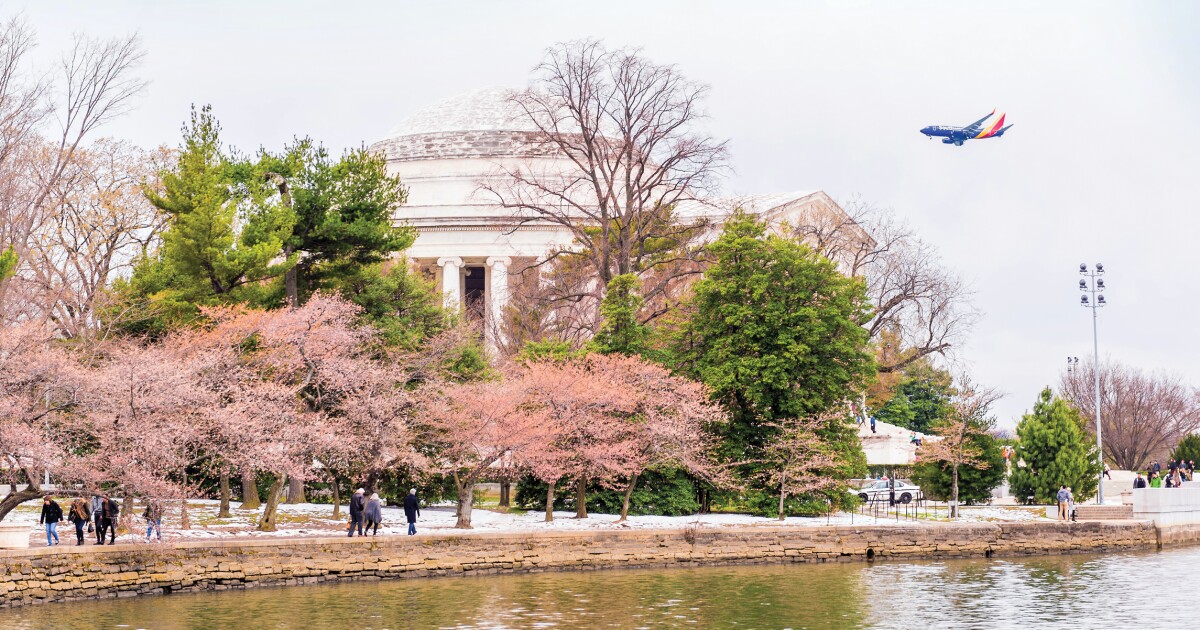

“You’re going to like this one, boss,” one bartender, originally from Argentina, said as he delivered a $13 beer at Seattle-Tacoma International Airport in mid-April. Two limes later, he was correct. I did like it.
It had been almost two years since I last made the plane trip to Washington, D.C. What I experienced was two worlds: one Washington, the state, which had basically bounced back from the pandemic troubles of the last few years, though it is adjusting, and another Washington, the District of Columbia, which continues to struggle and may never be quite the same.
SOUTHWEST NIGHTMARE CONTINUES AS ‘TECHNICAL ISSUES’ DELAY 1,800 FLIGHTS
Airline travel has soared this year for two reasons. The first is that people want to fly again, for both business and pleasure. The other is that the airlines and airports have been able to staff up enough to make that possible again, probably.
Domestic air travel recovered to 92% of its pre-COVID-19 levels last year, according to an analysis by David Casey in the trade journal Aviation Week. (Other analyses arrived at a lower but similar number of 88%.) This year, air traffic could set new records, provided the airlines can get over last year’s growing pains.
“Overall, U.S. airlines canceled 5.4% of their scheduled domestic flights in December, higher than the rate of 1.1% in both November 2022 and in pre-pandemic December 2019,” Casey wrote before he added the important caveat that one airline probably skewed the numbers. “Of the industry-wide cancellation rate during the month, 54.5% of were attributed to Southwest Airlines.”
December is one of the year’s busiest months for travel and also one of the most cancel-prone, thanks to winter weather. The fact that most airlines navigated this last year without an excessive number of cancellations could augur well for summer travels.
That’s what many airlines are banking on, anyway.
“Looking at planned capacity levels for the summer 2023 season based on schedules filed with [the Official Airline Guide] shows that the number of seats U.S. airlines plan to operate will be about 6% higher than during summer 2019,” before the pandemic struck, Casey said.
The increased traffic was reflected in what I observed during a long layover in mid-April. SeaTac’s renovated North Satellite was bustling with people.
When I last flew in the summer of 2021, the federal transportation mask mandate made things tricky. On this year’s trip, some people wore masks, but mostly by choice.
Maybe 1-in-20 workers or travelers were masked up. One SeaTac children’s play area had a sign indicating masks were required. The children playing there, and the parents supervising, simply ignored it.
Washington, D.C., was a different story. Specifically, it was less of a success story and more of a cautionary one.
Scholars at the Brookings Institution responded to last year’s State of the Capital Region Report by lamenting that “Greater Washington’s commuters continue to choose gridlock” because “four in five Washington-area commuters drive to work — and that number hasn’t changed in half a century.”
While the percentages may not have changed, the volume certainly has. This year, I was there during cherry blossom season and on spring break for many public schools, which put hotel rooms at a premium. At the same time, the street traffic was fairly light, and one simply couldn’t miss the “retail space available” signs on practically every block.
CLICK HERE TO READ MORE FROM THE WASHINGTON EXAMINER
Many workers at the district’s government agencies and nonprofit organizations have not yet returned to their offices or have embraced a new “hybrid” work schedule that brings them to the office only a few days a week. Transit numbers have slumped along with wider commuter numbers and don’t show significant signs of improvement.
The Washington, D.C., area, including neighboring Maryland and Virginia, usually has one of the nation’s most recession-proof economies. For now, though, it’s the other Washington that’s on the economic upswing.







